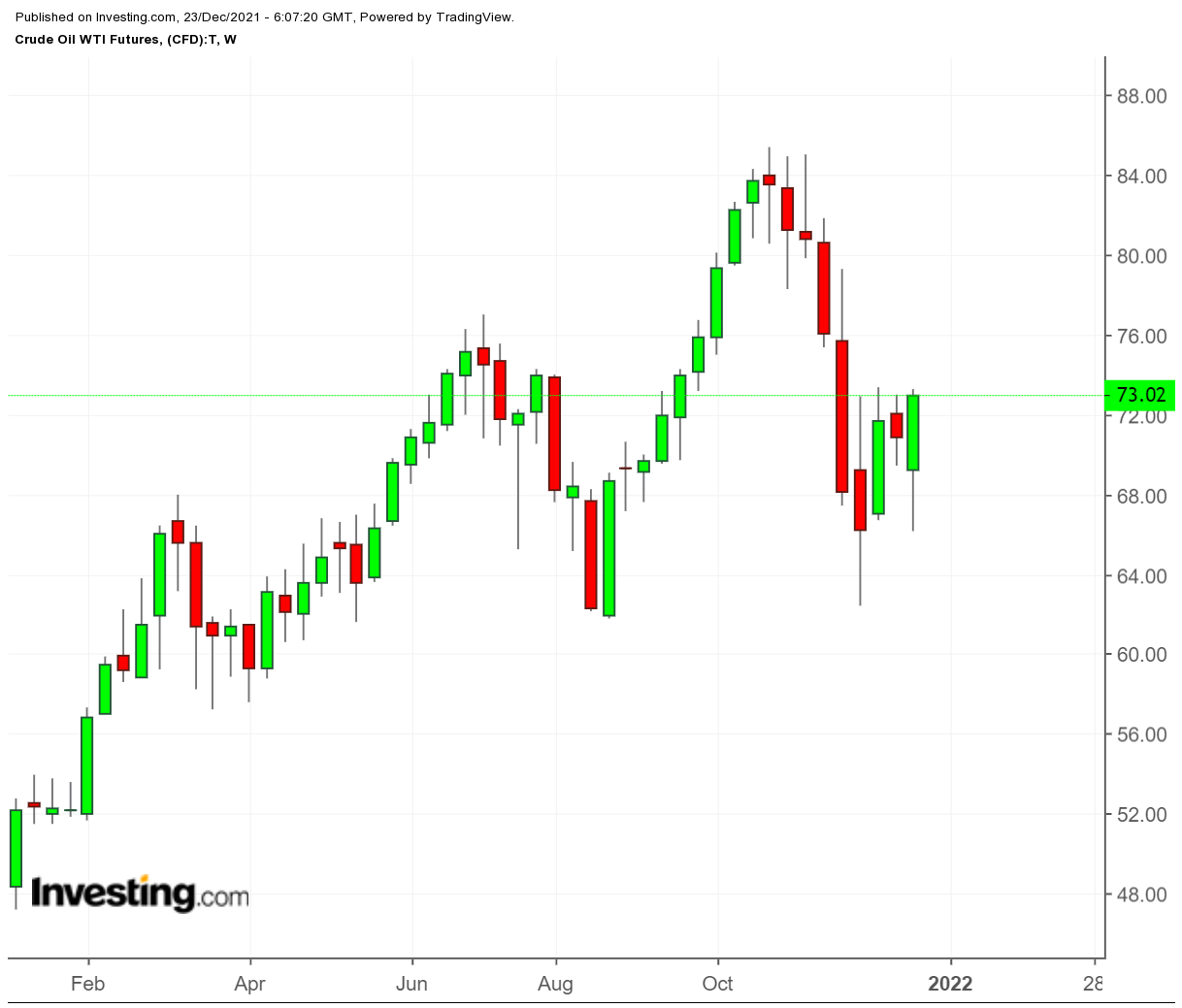As 2021 winds down, let’s take a look at how oil markets fared this year and which issues proved to be the most important drivers of prices.

WTI started the year just below the $50 per barrel mark and rose to a high of $83 per barrel before dropping back into the low to mid $70 per barrel range to close out the year. Brent followed a similar pattern.
1. Pandemic
The coronavirus pandemic was still the overwhelming issue affecting energy markets in 2021. While 2020 was all about lockdowns and movement restrictions, the focus in 2021 shifted largely to the recovery of economies and travel in particular—that is until December.
The economic recovery process has been uneven, with some sectors rebounding much more quickly than others. Despite the upward resuscitation and growth narrative, energy markets were still susceptible to fear and panic, first because of COVID's Delta variant and then via the Omicron strain. The sudden drop in oil prices on the day after the Thanksgiving holiday in the United States coincided with the news about the emergence of the Omicron variant. This is evidence that markets are still volatile and remain vulnerable to fears about the virus.
2. Inflation
Higher energy prices helped drive inflation this year, but as I pointed out last week, inflation also acted on energy prices. As we near the end of 2021, we cannot overlook the impact that it is having on maintaining the price of oil.
It has helped ensure that oil prices haven’t dropped that much despite fear of the Omicron variant and growing restrictions in Europe and parts of Asia. Inflation has also affected producers’ ability to increase output by boosting the costs of every part of the drilling and production process.
3. Travel
Air travel bookings rose in 2021, nearly hitting pre-pandemic levels in the United States around the Thanksgiving holiday, typically the busiest air travel time of the year.
Deliveries of jet fuel in the US during 2021 rose from February through August and then declined slightly through November. However, the gap between 2021 and 2019 did reach its narrowest point, 10.8%, in November.
International flights have not risen nearly as much as domestic and cargo flights. International travel remains a point of weakness and could affect oil demand into 2022. This will be discussed in greater detail in next week’s column.
4. Gasoline prices
Gasoline prices in the United States were a major concern in the second half of 2021. The national average in the United States peaked at $3.42 per gallon in November, a 60% increase from the previous year.
The Biden administration’s attempt to lower prices with a coordinated Strategic Petroleum Reserve release did not yield the desired results, however fear over the Omicron variant did help lower prices somewhat.
Nevertheless, as the year end approaches, gasoline is still higher in the United States than most consumers find comfortable given current economic conditions.
5. OPEC+
OPEC+ played an important role in driving oil market news in 2021, as it worked to gradually increase production to meet rising demand. In July, there was some concern that the group would collapse when a rift developed between Saudi Arabia and the UAE over how fast production should be increased.
However, after some extended negotiations, a long-term agreement to increase production by 400,000 bpd each month was reached. Yet, because the group also agreed to meet every month to review and re-authorize the plan, the market has continued to act as though a new agreement must be considered monthly. As a result, prices tend to become volatile around the beginning of the month when the OPEC+ meetings are scheduled.
6. U.S. oil production
In 2020, the big issue with production was that there was too much, and producers had to cut before overloading storage capacity. According to the EIA, oil production in the U.S. fell by 8% in 2020, which is the largest annual decrease on record.
In 2021, the big story was that U.S. production did not rise to accommodate increased demand, as many expected it would. Instead of returning to the "growth at all costs" model pursued in years past, U.S. oil producers slimmed down their budgets and, as oil prices increased, poured that extra revenue into paying down debt and returning value to shareholders.
U.S. oil production started 2021 at 11 million bpd and is ending the year at around 11.6 million bpd, despite the significant increase in oil prices.
Next week, we will look at what could be in store for U.S. production in 2022.
